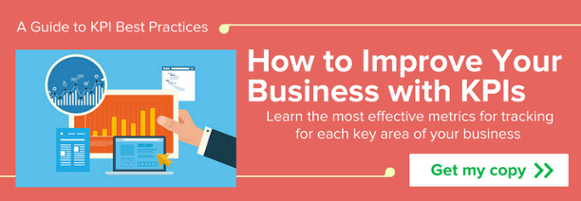Is KPI Tracking Worth It for Your Business?
Very few business leaders question the importance of tracking key performance indicators (KPIs) for their business. KPI tracking has long been an integral strategy for helping businesses improve employee performance and meet their long-term business goals. However, though this is the commonly-accepted thought, is KPI tracking worth it for your business?
The short answer is: “Most likely yes.” Here’s an explanation of the benefits of KPI tracking and why it’s worth your time.
The business benefits of KPI tracking
When used correctly, KPI tracking can be an incredibly helpful tool for businesses. Some of the key benefits of measuring performance metrics and acting on that data include:
Being able to recognize and motivate top performers
One of the most important benefits of measuring performance metrics is that it can help you track who your top-performing team members are. Using KPIs, you can identify, congratulate, and reward these top performers—which can help spur them and others to improve.
For example, say that you have two people on your client services team, Bill and Bob. If Bill is consistently exceeding his goals for customer satisfaction rates, tickets closed, and time-to-resolution while Bob isn’t, you can incentivize Bill’s performance with public recognition and other bonuses.
On the other hand, failing to acknowledge and reward Bill’s extra effort can risk demotivating him. If Bill only gets the same amount of compensation and recognition as Bob despite putting in extra effort and performing better, Bill may think that it isn’t worth working hard—leading to a drop in his performance.
Identifying learning opportunities amongst your team
Continuing from the Bill and Bob example above, once you’ve identified a top performer in your team by tracking their performance metrics, what else can you do aside from simply recognizing and rewarding them? One thing you could do is ask them to provide coaching for others on the team who are struggling to meet their performance goals.
For instance, you could have Bill talk to Bob about how they each approach their client services work, and provide some tips and tricks for ensuring client happiness and streamlining service delivery. This helps not only to recognize Bill’s achievements, but to increase Bob’s skills so he can improve his own performance metrics as well. It can even help to groom Bill for an eventual leadership role on the team by getting him used to teaching and leading others.
Having the data needed to course correct
Even the best-laid plans may not succeed. However, without tracking performance metrics for the business, it’s nearly impossible to tell when a given strategy is having a positive or negative impact on the business.
Using KPI tracking to monitor key business metrics can help you identify trends and even associate them with specific events or actions. For example, say you’ve hired a new leader for your sales team, and your sales KPIs immediately improve or worsen. By tracking KPIs, you could associate the change in sales performance with the act of changing leadership.
Using this information as a starting point, you can poll your sales team and their new leader to see what else was changed, and use that information to make more course corrections to improve business performance.
By tracking key performance indicators, you can identify when the business plan is doing very well or going off the rails. Hopefully, you’ll also have the data you need to make smarter business decisions to keep things improving.
Choosing the right KPIs for benchmarking employee and business performance
Naturally, to achieve the best effect for measuring key performance indicators in your business, it’s important to choose the right ones in the first place. When selecting KPIs for your business, it can help to use a goal-setting framework to help ensure that each KPI you pick is relevant. One popular framework to use is the SMART framework. SMART being an acronym for:
- Specific. Meaning that the performance metric can be clearly-defined—such as saying “sales should add $50,000 in monthly recurring revenue each month in quarter one” as opposed to “I want to sell a lot.”
- Measurable. This means that the KPI should be objectively measurable. In other words, results should not have room for interpretation or bias; they should simply have a goal that can be objectively met or missed—such as “closing 10 deals per month” instead of “being more upbeat on sales calls.”
- Achievable. Can employees meet the goal set for a KPI with the resources available to them? This may require you to take a look at historic performance to see whether a goal being set can be achieved. For example, if your historic top performance for sales in a month is $200,000 in closed deals—and that was by one top performer who never repeated the feat—then asking every member of the sales team to hit $300,000 in sales in a month may not be achievable.
- Relevant. Does the KPI really matter to your business and its overall goals? For example, if your business focuses on managed services, then KPIs focused on service delivery would make sense, while inventory management-focused metrics may not be as relevant (except where the inventory is required to deliver services).
- Timely. Establishing a time frame for meeting certain goals can be important for creating a sense of urgency. If the span of time for meeting a KPI goal is too long, it becomes an abstract concept to employees—so they don’t focus on meeting that goal.
Choosing KPIs to track and setting goals for them using the SMART framework listed above can help you ensure that you’re picking the right performance metrics to motivate your people.
Need help tracking your KPIs so you can improve business performance? Reach out to the BrightGauge team to learn more!
Free MSA Template
Whether you’re planning your first managed services agreement, or you’re ready to overhaul your existing version, we've got you covered!



